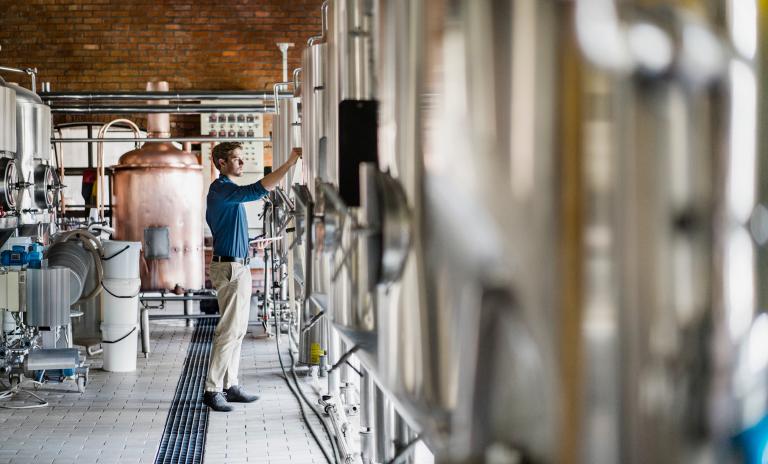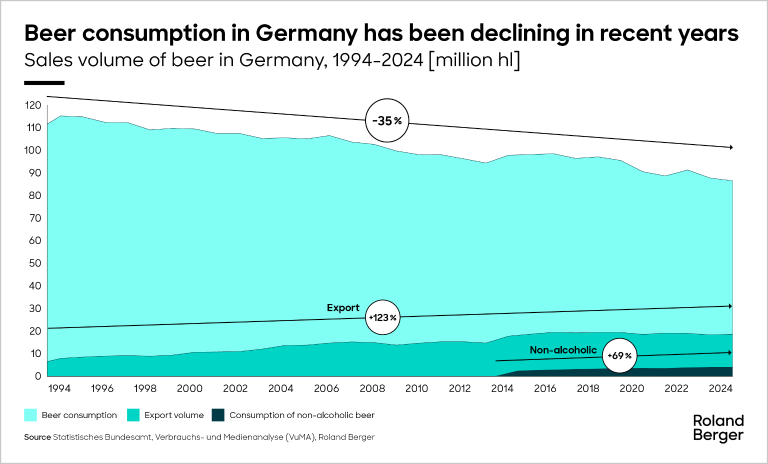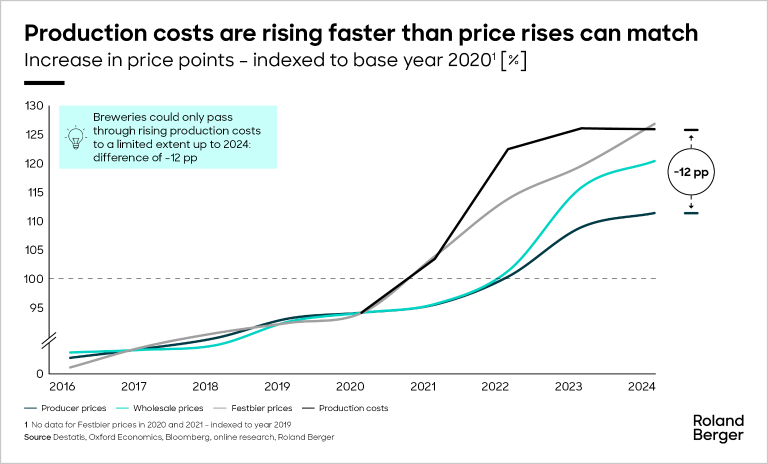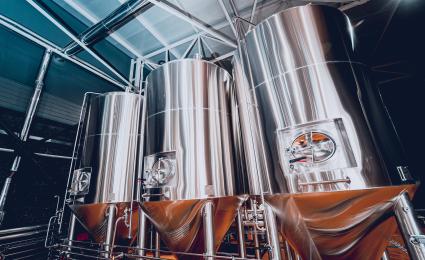Can precision fermentation revolutionize food ingredients? While it promises innovation, challenges in pricing, acceptance, and regulations must be overcome.


Price and cost radar for the German beer market
Falling sales, rising costs: Breweries must optimize their efficiency, strategy and product portfolio
Roland Berger's price and cost radar for the German beer market illustrates the extent of the pressure the German beer industry is under owing to a critical combination of shrinking sales and significantly increased production costs. Particularly the small and medium-sized breweries face substantial and growing pressure on their performance, as costs have risen faster in recent years than prices in retail could match. Even the price rises announced for the coming months will only partially close the gap, making further action unavoidable. Additionally, breweries must develop and implement efficiency-increasing measures and adapt their overall strategy and product portfolio to the new market situation and changes in consumer demand.

Beer consumption is declining worldwide. The fall is especially dramatic in Germany, where consumption of beer has decreased by 35% in the past 31 years. The main drivers of this trend are a more critical attitude towards alcohol consumption among the population in general, stronger health awareness , and the changing drinking habits of younger generations, which have shifted consumer preferences: People are drinking less classic beer and more non-alcoholic beer as well as beer mixes. But the growing market share of these beverages is not enough to stem the overall decline in volumes sold.
Production costs rising faster than selling prices
Many breweries have seen the sign of the times and are responding to the changed situation by launching new products – the market, especially for non-alcoholic beers, is much more diverse today than it was a decade ago. But this is not enough to offset the steady increase in production costs: Since 2020 alone, costs have risen six percent a year, and they will continue to rise in the years to come. The biggest drivers of the increase are raw materials and packaging, which account for 24% of production costs, followed by staffing costs (23%).
Comparing the increase in production costs against the development of the wholesale prices achieved by breweries reveals a diverging trend: In the past four years, breweries have only managed to pass through part of their increased production costs – with a definite time lag. This can leave a gap of up to twelve percentage points in cost coverage. As a result, many breweries find themselves under enormous margin and cost pressure, which is also affecting their ability to make the level of investments necessary to develop new products as well as achieve sustainability goals and make their operations fit for the future. Particularly as the price rises that some brewery groups have already announced for the autumn are not even sufficient to compensate for the discrepancy between higher production costs and long-stagnant selling prices.
Further price rises inevitable but still not enough
If breweries are to remain competitive long term in the face of falling sales, changing consumer habits and rising costs, the industry will have to enforce further price adjustments in the market and take additional measures as well. Two levers will be key: On the one hand, efficiency gains need to be intensified, for example through AI-powered optimization of all stages in the value chain – from sales planning to procurement, production, warehousing and inventory management right through to logistics. Organizational structures also hold potential for efficiency optimization in most cases.
On the other hand, the changes in the market also require breweries to fundamentally rethink their corporate strategy, including their brand and product portfolio. Questions to answer include: Should we diversify our business lines or perhaps focus even more sharply on specific ones? Do we need to internationalize our business or is a strategy of increased local identification more promising? Are our business model and processes sustainable? In terms of product portfolio, it is about more than just streamlining the product range and increasing sales of existing products by introducing new packaging or different sizes. Breweries specifically need to meet the new needs of consumers with new products of their own. The possibilities go far beyond non-alcoholic beers or beer mixes: New fermentation technologies can be used, for example, to produce drinks that offer real alternatives to alcoholic beverages from a taste, sensory and functional perspective. These and other innovative products with clear added value will also open up growth potential for breweries in the future.










